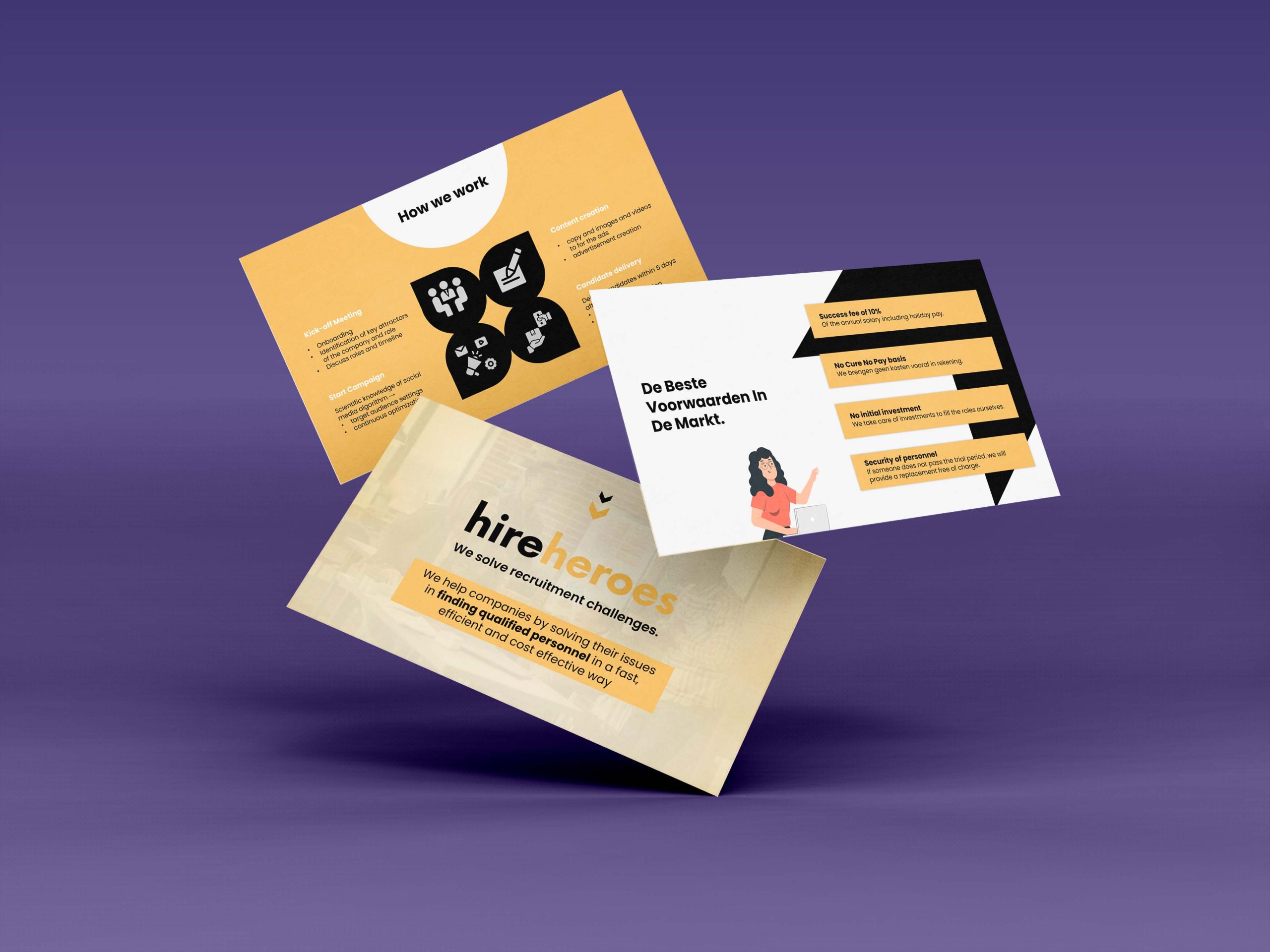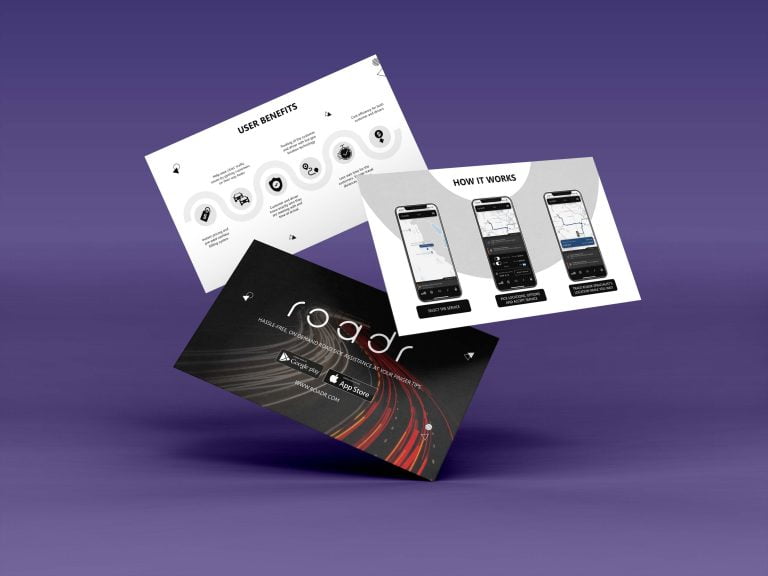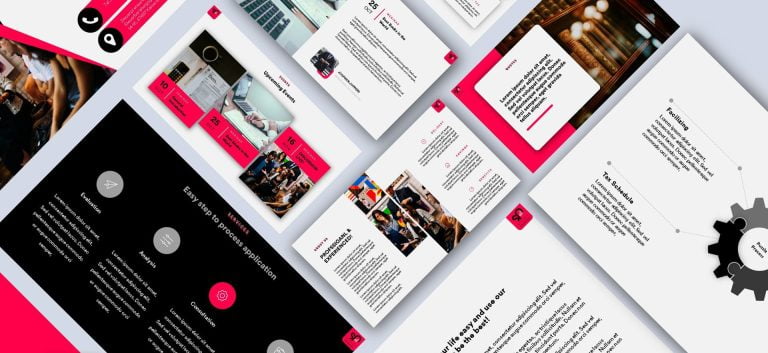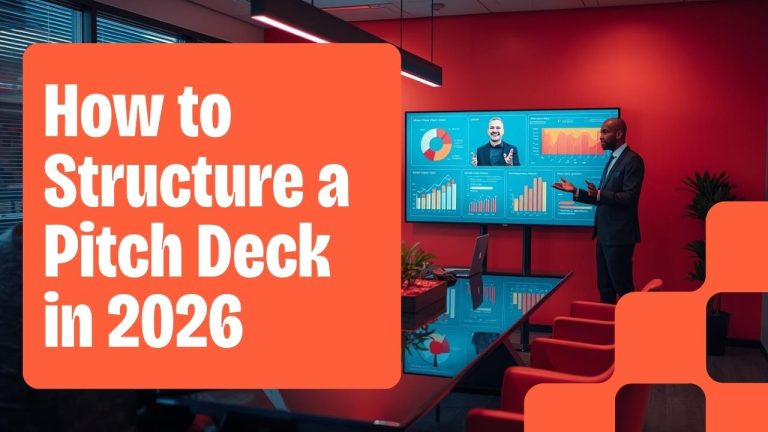In today’s busy world, keeping your audience’s attention during a presentation can be tough. With so many distractions, your carefully crafted slide deck can easily get overlooked, making it hard to convey your key points. If your presentation isn’t interactive, you risk losing your audience’s focus, and your message won’t have the impact it should.
Luckily, there are plenty of simple ways to make your presentation more engaging. Whether you’re using live polls, adding visuals to your slides, or finding ways to break the ice with your audience, these techniques can help create an interactive presentation that captivates and engages the audience.
Curious about how to bring these strategies into your next PowerPoint presentation? Dive into the sections below to discover 10 practical tips that great presenters use to keep their audience members fully engaged and make sure their key takeaways are memorable.
Understanding Interactive Presentations
In today’s fast-paced world, interactive presentations are key to grabbing your audience’s attention and getting your message across effectively. Unlike the old-school approach of just talking through static slides, interactive presentations get the audience involved. Whether you ask the audience questions, pose challenges, or use visuals to reinforce your points, these methods make your pitch more engaging and easier for people to remember.

What is an Interactive Presentation?
Definition and Key Features
An interactive presentation is a way to make your presentation more engaging by involving the audience throughout your presentation with various interactive elements. Unlike the traditional formats where the presenter simply moves through a linear slide deck, an interactive presentation encourages the audience to interact, making the whole experience much more memorable. Features like live polling, Q&A sessions, and interactive slides are great ways to start engaging the crowd right from the first slide. This approach helps build rapport between you and your audience, turning your talk from a monologue into a conversation.
Benefits of Interactive Presentations
There are plenty of benefits to making your presentation more interactive. For starters, it’s a great way to get the audience’s attention and keep it, which is crucial in public speaking. When you get your audience involved—whether through live polling, asking a question, or even a show of hands—they’re more likely to remember what you’re saying. This can lead to better retention of key points and a much more personal connection between you and your audience. Plus, real-time feedback allows you to adjust your tone of voice or the direction of your talk based on how the audience is reacting, making your presentation more relatable to the audience. All these elements combined help create a more dynamic and compelling narrative, making sure your presentation stands out and leaves a lasting impression.
Top 10 Ways to Enhance Interactivity in Your Presentation
Turning your presentations into interactive experiences can really boost how well they connect with your audience. By using different interactive techniques, you can make your presentation more engaging and keep the audience’s attention from the get-go. This way, you’re not just delivering information—you’re creating a participatory environment that makes your content more memorable. In the sections below, we’ll dive into the top 10 presentation ideas to help make your presentation more interactive, ensuring your message sticks with the audience and keeps them engaged throughout your presentation.

1. Use Live Polls and Q&A Sessions
Tools and Platforms for Live Polls
Live polls are a great way to get your audience involved in real-time and gather instant feedback. With tools like Mentimeter, Slido, and Kahoot!, you can easily add interactive polls to your presentation, letting the audience participate right from their smartphones. These platforms have user-friendly interfaces and offer real-time data visualization, so you can see the results straight away and adjust your presentation if needed. They also let you customize different question formats, like multiple-choice or rating scales, to fit whatever you’re discussing. Using live polling is a powerful way to make your presentation more engaging and keep the audience’s attention.
Best Practices for Effective Q&A
Effective Q&A sessions are key to keeping your audience engaged and addressing what’s on their minds. To make the most of this part of your presentation, it’s important to set clear guidelines and time limits so things stay organized and on track. Encourage your audience to ask questions throughout your presentation, using an app or a Q&A tool, instead of waiting until the end. This way, you can tackle the most relevant questions as they come up.
When giving a presentation, being ready to handle tough questions with confidence and providing thoughtful answers can really show off your expertise. Plus, it helps build a stronger connection with your audience, showing that you’re genuinely interested in addressing their needs. Engaging with your audience during Q&A sessions not only makes your presentation more interactive but also leaves a lasting impression.
2. Incorporate Multimedia Elements
Multimedia elements can significantly enhance the interactivity and engagement of your presentation. By integrating videos, audio clips, and interactive visuals, you can create a more dynamic and immersive experience that captivates your audience’s attention and aids in the retention of key information. Here’s how to effectively incorporate multimedia elements into your presentations:
Engaging Videos and Audio Clips
Videos and audio clips are powerful tools for enriching your presentation and making complex concepts more accessible. Start by selecting high-quality, relevant videos that directly support your content. For instance, incorporating short clips that illustrate key points or provide real-world examples can make your presentation more engaging and relatable. Ensure that the videos are well-edited and free from distractions, as poor-quality content can detract from your message. Additionally, using audio clips, such as interviews or sound bites, can provide variety and help to emphasize important points. Remember to test all multimedia elements before the presentation to avoid technical issues and ensure smooth playback.
Interactive Infographics and Charts
Interactive infographics and charts can transform static data into engaging, interactive experiences. Tools like Canva, Prezi, and Piktochart allow you to create visually appealing infographics and charts that can be clicked or manipulated during the presentation. For example, interactive charts that reveal additional data or insights when clicked can make complex information more digestible. Infographics that update in real-time based on audience input or selections can also enhance engagement and provide a more personalized experience. When designing interactive visuals, focus on clarity and simplicity to ensure that they enhance rather than overwhelm your audience.
3. Implement Gamification Techniques
Gamification involves incorporating game-like elements into your presentation to boost engagement and make the learning experience more enjoyable. By adding competitive or interactive features, you can transform a standard presentation into a dynamic and motivating experience. Here’s how to effectively implement gamification techniques in your presentations:
Popular Gamification Tools
Several tools can help you integrate gamification into your presentations seamlessly. Platforms like Kahoot!, Quizizz, and Mentimeter offer interactive quiz and game functionalities that can be easily incorporated into your presentation. These tools allow you to create quizzes with various question formats, track participant scores, and even include leaderboards to foster competition. Additionally, platforms like Poll Everywhere and Wooclap enable you to add interactive elements such as live polls and challenges that can enhance the gamified experience. These tools are user-friendly and provide real-time feedback, making it easy to engage your audience and track their participation.
Examples of Game Elements in Presentations
Incorporating game elements into your presentation can take many forms. For example, you might use a quiz format to review key points or test audience knowledge, with points awarded for correct answers. Leaderboards can add a competitive edge, motivating participants to stay engaged and perform well. Another approach is to include interactive challenges or puzzles related to your content, which can encourage problem-solving and active participation. You might also incorporate reward systems, such as badges or virtual prizes, to recognize and celebrate participant achievements. By weaving these game elements into your presentation, you create a more engaging and enjoyable experience that can enhance learning and retention.
Implementing gamification techniques can significantly enhance the interactivity of your presentations, making them more engaging and memorable for your audience. By leveraging popular gamification tools and incorporating creative game elements, you can transform your presentation into an exciting and participatory experience that resonates with your audience and boosts their overall engagement.
4. Utilize Interactive Slides and Visuals
Interactive slides and visuals are essential tools for making your presentation more engaging and dynamic. By incorporating elements that viewers can interact with, you transform passive viewing into an active experience. This approach not only captures attention but also helps reinforce key concepts and make the content more memorable. Here’s how to effectively utilize interactive slides and visuals:
Design Tips for Interactive Slides
Designing interactive slides involves more than just adding flashy elements; it’s about enhancing user experience while maintaining clarity and focus. Start by ensuring that each interactive slide is visually appealing yet straightforward. Use clean layouts with high-contrast colors to make interactive elements stand out. Incorporate clear labels and instructions to guide the audience on how to engage with the content. Avoid clutter by focusing on one interactive element per slide or grouping related elements together. Additionally, consider using animations or transitions to make the interactions more engaging and intuitive, but be cautious not to overdo it, as excessive effects can distract from the main message.
How to Use Clickable Elements Effectively
Clickable elements such as buttons, hyperlinks, and embedded links can significantly enhance interactivity when used effectively. To make the most of clickable elements, ensure they are strategically placed and clearly labeled to guide the audience seamlessly through the content. For example, use clickable buttons to navigate between different sections of your presentation or to reveal additional information on demand. Hyperlinks can be used to link to external resources, additional data, or relevant websites, providing a richer context to your content. Make sure that all clickable elements are tested thoroughly before the presentation to avoid any technical issues and ensure a smooth user experience. By integrating these elements thoughtfully, you create a more engaging and interactive presentation that encourages exploration and active participation.
5. Engage with Audience Participation
Engaging with your audience through participation is a powerful way to enhance the interactivity of your presentation. By actively involving your audience, you create a more dynamic and engaging environment that keeps attention focused and encourages a deeper understanding of your content. Here’s how to effectively foster audience participation:
Ice-breaker Activities
Ice-breaker activities are an excellent way to warm up your audience and encourage interaction right from the start. These activities can help break down barriers, reduce tension, and create a more comfortable atmosphere. Consider starting with simple exercises such as quick polls or introductory questions that prompt audience members to share something about themselves. Activities like “Two Truths and a Lie” or “Speed Networking” can also energize the group and set a positive tone for the presentation. Tailor the ice-breakers to fit the context of your presentation and the profile of your audience to maximize engagement and relevance.
Group Discussions and Collaborative Exercises
Group discussions and collaborative exercises are effective for deepening engagement and fostering a sense of community among participants. Incorporate breakout sessions or small group activities where audience members can discuss specific topics or solve problems together. Provide clear instructions and relevant discussion prompts to guide the groups. This approach not only encourages active participation but also facilitates peer learning and idea exchange. Additionally, collaborative exercises such as brainstorming sessions or real-time problem-solving challenges can help apply concepts practically and make the content more relatable. Be sure to allocate time for each group to share their insights or solutions with the larger audience, which can enrich the overall presentation experience.

6. Tell Compelling Stories
Storytelling is a compelling way to connect with your audience on an emotional level and make your presentation more memorable. By weaving narratives into your content, you create a more engaging and relatable experience that captures attention and reinforces key messages.
Crafting Engaging Narratives
Crafting engaging narratives involves more than just presenting information; it’s about telling a story that resonates with your audience. Start by identifying the core message or theme you want to convey and build a narrative around it. Use storytelling techniques such as setting a scene, introducing characters, and creating a plot that unfolds logically. Incorporate personal anecdotes, real-life examples, or case studies to add authenticity and relevance. Make sure your narrative has a clear beginning, middle, and end to maintain interest and provide a satisfying conclusion. Engaging narratives not only captures attention but also help the audience connect emotionally with the content.
Integrating Stories with Presentation Content
Integrating stories with your presentation content can enhance understanding and retention of key points. Instead of presenting information in isolation, embed stories that illustrate or contextualize the data. For example, use a case study to demonstrate the impact of a concept or a personal story to highlight a key takeaway. Visual aids such as images, videos, or infographics can complement your stories and make them more vivid and engaging. Ensure that the stories you choose align with your overall message and contribute to the presentation’s objectives. By blending stories with your content, you create a more cohesive and engaging experience that helps your audience relate to and remember your message.
7. Personalize Your Content
Personalizing your content is a key strategy for making your presentation more relevant and engaging to your audience. When you tailor your presentation to meet the specific needs and interests of your audience, you create a more meaningful connection and enhance their overall experience. Here’s how to effectively personalize your presentation content:
Tailoring Content to Audience Needs
To tailor content effectively, start by understanding your audience’s background, interests, and expectations. Gather information through pre-event surveys, interviews, or research to identify the key issues and interests of your audience. Customize your content to address these needs directly, using examples and case studies that are relevant to their industry or personal experiences. Incorporate audience-specific data, insights, and scenarios to make your presentation more applicable and engaging. By aligning your content with the audience’s needs, you demonstrate that you value their perspective and are committed to providing them with relevant and actionable information.
Examples of Personalized Presentation Techniques
Personalized presentation techniques can range from incorporating specific audience data to using customized visuals and examples. For instance, if you’re presenting to a company, use their own data or case studies to illustrate your points. Incorporate industry-specific terminology and challenges to make your content more relatable. Visual aids such as charts and infographics can be customized with audience-specific data to enhance relevance. Additionally, using personalized anecdotes or examples can help to establish a stronger connection with your audience. These techniques not only make the presentation more engaging but also reinforce the applicability of your message.
8. Use Interactive Technology
Interactive technology can transform your presentation by integrating advanced tools and devices that foster a more engaging and immersive experience. Effective Q&A sessions are essential for engaging your audience and addressing their specific concerns. To make the most of your Q&A, start by setting clear guidelines and time limits to keep the session organized and focused. Encourage participants to submit questions throughout the presentation, either through an app or a designated Q&A tool. This approach allows you to address relevant questions as they arise, rather than waiting until the end. Additionally, be prepared to handle challenging questions with confidence and provide thoughtful responses that add value to the discussion. Engaging with your audience during Q&A sessions not only enhances interaction but also demonstrates your expertise and willingness to address their needs. By leveraging the latest technology, you can enhance interactivity and provide a more dynamic presentation. Here’s how to effectively use interactive technology:
Virtual Reality (VR) and Augmented Reality (AR)
Virtual Reality (VR) and Augmented Reality (AR) offer cutting-edge ways to create immersive and interactive presentations. VR can transport your audience to a different environment or scenario, allowing them to explore and interact with 3D simulations or virtual landscapes. For example, a VR presentation could allow users to navigate through a virtual product or experience a simulated scenario related to your content. AR, on the other hand, overlays digital information in the real world, enhancing physical objects with interactive elements. AR can be used to display additional information or interactive content when viewed through a mobile device or AR glasses. Both VR and AR can provide a highly engaging and memorable experience, although they require appropriate equipment and careful planning to integrate effectively.
Interactive Whiteboards and Clickers
Interactive whiteboards and clickers are versatile tools that can enhance audience interaction and participation. Interactive whiteboards allow presenters to display and manipulate digital content directly on a touch-sensitive surface, making it easy to illustrate ideas, annotate information, and engage with the audience in real time. These boards often support collaborative activities, where participants can contribute ideas or solutions. Clickers, or audience response systems, enable participants to answer questions or vote on options using handheld devices. This real-time feedback can be used to gauge understanding, collect opinions, or make decisions during the presentation. Both technologies facilitate active engagement and can help to create a more interactive and participatory environment.
9. Encourage Real-Time Feedback
Encouraging real-time feedback is essential for creating an interactive presentation that resonates with your audience. By actively seeking input and responding to audience reactions during your presentation, you can adjust your approach to better meet their needs and enhance engagement. Here’s how to effectively encourage and utilize real-time feedback:
Methods for Gathering Instant Feedback
There are various methods to gather instant feedback from your audience. Interactive tools like live polls, feedback forms, and audience response systems can provide immediate insights into how your content is being received. Platforms such as Mentimeter, Slido, and Poll Everywhere allow you to create live polls and surveys that participants can respond to in real time using their smartphones. Additionally, you can use digital feedback tools like QR codes linked to feedback forms or comment sections to capture spontaneous reactions. Another effective method is using open Q&A sessions, where audience members can ask questions or provide feedback directly during the presentation. These methods help you gauge audience understanding and adjust your presentation dynamically.
Using Feedback to Enhance Engagement
Once you gather real-time feedback on the fly, use it to refine and enhance your presentation. Analyze the responses to identify common themes or areas of interest that may require more attention. Adjust your content on the fly based on audience reactions to ensure it remains relevant and engaging. For instance, if feedback indicates confusion about a particular topic, you can clarify or expand on that point. Additionally, acknowledging and addressing feedback during the presentation shows that you value audience input, which can foster greater engagement and trust. By incorporating feedback effectively, you create a more responsive and interactive experience that keeps your audience engaged and invested in your presentation.
10. Practice Effective Delivery Techniques
Practicing effective delivery techniques is crucial for maximizing the impact of your presentation. How you present your content can greatly influence audience engagement and retention. Employing dynamic delivery methods and avoiding common pitfalls can ensure that your presentation is both engaging and memorable. Here’s how to master effective delivery:
Techniques for Dynamic Presentation Delivery
Dynamic presentation delivery involves more than just conveying information; it’s about delivering it in an engaging and impactful manner. Start by focusing on your body language and vocal delivery. Use varied tones, pacing, and emphasis to keep your delivery lively and interesting. Incorporate purposeful gestures and movement to reinforce key points and maintain visual interest. Additionally, engaging with your audience through eye contact and interactive elements can help build a connection and encourage participation. Practice your presentation multiple times to refine your delivery and ensure smooth transitions between topics. Incorporate visual and multimedia elements strategically to complement your spoken content and enhance the overall experience.
Avoiding Common Presentation Mistakes
Avoiding common presentation mistakes is key to maintaining audience engagement and delivering a professional performance. Some frequent errors include overloading slides with text, speaking in a monotonous tone, and failing to engage with the audience. To prevent these issues, keep your slides concise and visually appealing, focusing on key points and using visuals to support your message. Practice varying your vocal delivery to avoid a flat presentation style and incorporate interactive elements to keep the audience involved. Additionally, be mindful of time management to ensure that you cover all your key points without rushing or dragging. By being aware of and addressing these common mistakes, you can deliver a more effective and engaging presentation.
Common Mistakes to Avoid in Interactive Presentations
Creating an interactive presentation involves more than just adding engaging elements; it requires a careful balance to ensure that these elements enhance rather than detract from your message. Avoiding common mistakes is crucial to delivering a presentation that is both effective and impactful. Here’s a look at some frequent pitfalls and how to steer clear of them:

1. Overloading with Interactive Elements
While interactive elements can greatly enhance a presentation, overloading your slides with too many interactive features can lead to confusion and distraction. Too many polls, quizzes, and multimedia components can overwhelm the audience and detract from the core message. To avoid this, carefully select interactive elements that directly support your content and align with your presentation goals. Ensure that each interactive feature has a clear purpose and contributes to the overall flow of the presentation. Prioritize quality over quantity to maintain focus and keep the audience engaged without causing sensory overload.
2. Ignoring Audience Relevance
Interactive elements that are not relevant to the audience’s interests or needs can diminish engagement and reduce the effectiveness of your presentation. To maintain relevance, tailor your interactive components to address the specific interests and concerns of your audience. Use audience data and feedback to customize polls, questions, and content to ensure that they resonate with the participants. Avoid generic or off-topic interactive elements that do not align with the audience’s expectations or the presentation’s objectives. Ensuring that all interactive elements are relevant helps to keep the audience engaged and invested in your message.
3. Neglecting Proper Testing of Interactive Features
Interactive features that do not function as intended can disrupt your presentation and undermine your credibility. It’s essential to thoroughly test all interactive elements before the actual presentation to identify and resolve any technical issues. Check that polls, quizzes, and multimedia components work seamlessly and are compatible with the presentation equipment and software. Conduct a dry run of the entire presentation, including interactive elements, to ensure smooth operation and address any potential problems. Proper testing helps to prevent disruptions and ensures that your interactive features enhance rather than hinder your presentation.
4. Poor Timing and Pacing
Effective timing and pacing are critical to maintaining audience engagement throughout your presentation. Introducing interactive elements at inappropriate times or spending too long on any single feature can disrupt the flow and cause disengagement. Plan the timing of interactive components carefully, integrating them at key points to reinforce or illustrate important concepts. Ensure that transitions between interactive elements and other content are smooth and logical. By maintaining appropriate pacing and timing, you keep the audience’s attention focused and ensure a cohesive presentation experience.
5. Lack of Clear Objectives
Interactive elements should be designed with clear objectives in mind to ensure they contribute effectively to your presentation goals. A lack of clear objectives can result in interactive features that are either irrelevant or not fully utilized. Before incorporating interactive elements, define what you want to achieve with each feature and how it will support your overall message. Clearly communicate these objectives to your audience, so they understand the purpose of the interactive components and how they fit into the broader context of the presentation. Clear objectives help to ensure that interactive elements are purposeful and enhance the overall effectiveness of your presentation.
Recommended Tools for Creating Interactive Presentations
Selecting the right tools can significantly enhance the interactivity and effectiveness of your presentations. Various tools offer different features and functionalities that can help you engage your audience and create a memorable presentation experience. Here’s an overview of some of the top tools for crafting interactive presentations:

1. Prezi
Prezi is known for its unique, zoomable canvas that allows for dynamic and visually engaging presentations. Unlike traditional slide-based tools, Prezi enables you to create non-linear presentations that can captivate your audience with smooth transitions and interactive paths. Its capabilities for incorporating multimedia, interactive elements, and real-time collaboration make it a powerful choice for engaging presentations. The ability to zoom in and out of different sections of the presentation can help in illustrating complex relationships and maintaining audience interest.
2. Mentimeter
Mentimeter is a popular tool for incorporating live audience engagement into your presentations. It offers features such as live polls, quizzes, word clouds, and interactive Q&A sessions that can be integrated seamlessly into your slides. Mentimeter allows you to collect real-time feedback and responses from your audience, making it easier to adapt your presentation based on their input. Its user-friendly interface and integration with various presentation formats make it a versatile tool for enhancing interactivity.
3. Google Slides
Google Slides is a versatile and accessible tool for creating interactive presentations. It offers collaborative features that allow multiple users to work on the same presentation simultaneously. Google Slides supports the integration of multimedia elements, such as videos and links, and provides options for embedding interactive elements like forms and quizzes. Its compatibility with other Google Workspace tools, such as Google Forms and Google Sheets, allows for easy data collection and analysis, enhancing the interactivity of your presentation.
4. Microsoft PowerPoint
Microsoft PowerPoint remains a robust choice for creating interactive presentations with its extensive range of features. It supports a variety of multimedia elements, including videos, audio clips, and animations. PowerPoint also offers interactive features such as clickable buttons, hyperlinks, and embedded quizzes. Advanced functionalities like custom animations and transitions allow you to create engaging and visually appealing presentations. PowerPoint’s widespread use and integration with other Microsoft Office applications make it a reliable option for both basic and advanced interactive presentations.
5. Other Notable Tools
Several other tools are worth considering for creating interactive presentations. Kahoot! and Quizizz are excellent for incorporating live quizzes and polls into your presentations, fostering engagement through gamified elements. Slido offers similar functionalities with additional features for Q&A and audience interaction. Canva provides a user-friendly platform for designing visually engaging presentations with interactive features. Powtoon allows you to create animated presentations that can capture and retain audience attention with creative visuals and interactive elements. Exploring these tools can help you find the best fit for your presentation needs and enhance your overall interactive experience.
FAQs
How Do You Start an Interactive Presentation?
Begin by introducing a compelling hook or ice-breaker to engage your audience. Use interactive tools like polls or questions right from the start to set a participatory tone.
Which Type of Presentation is the Most Interactive?
Presentations that incorporate live polls, Q&A sessions, and multimedia elements are highly interactive. Formats that encourage real-time audience input and feedback typically offer the highest level of engagement.
How Can Interactive Presentations Enhance Audience Engagement?
Interactive presentations keep audiences actively involved by soliciting their input and responses. This dynamic approach maintains attention, fosters participation, and increases retention of information.
What Are Some Common Interactive Elements to Include?
Common interactive elements include live polls, Q&A sessions, quizzes, clickable buttons, and multimedia components like videos and interactive infographics, all of which encourage audience participation.
Can Interactive Presentations Be Used for Educational Purposes?
Yes, interactive presentations are highly effective for education. They engage students through interactive quizzes, discussions, and multimedia content, enhancing understanding and retention of educational material.
Conclusion
Interactive presentations are a game-changer for keeping your audience engaged and making your message stick. By using tools like live polls and Q&A sessions, personalizing your content, and steering clear of common pitfalls, you can create a presentation that’s both captivating and effective. Embrace interactive elements to make your presentation more dynamic and memorable. When you get the audience involved and tailor your approach to their needs, you’ll not only keep their attention but also ensure that your key points resonate long after the presentation ends.







